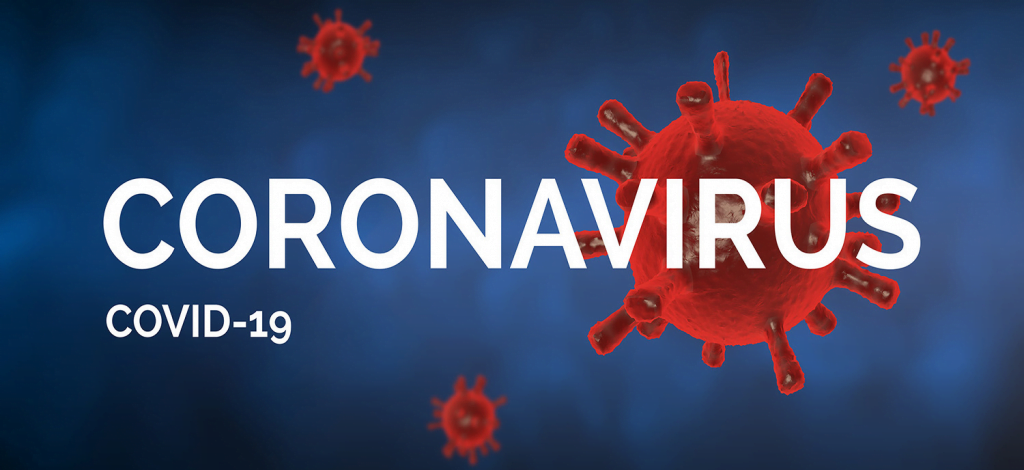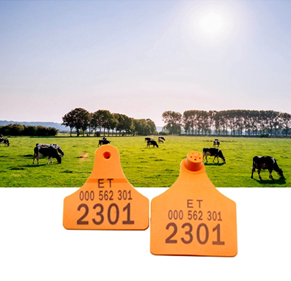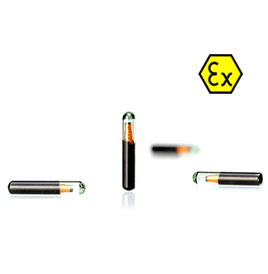
Les élevages d'animaux ont toujours été enclins à sortir des épidémies animales. Nous avons été témoins d'une épidémie de grippe aviaire, Grippe porcine H1NI, Nipah, Ebola et maintenant COVID-19.
De nombreux pays ont pris des mesures sérieuses pour contrôler la poursuite de l'épidémie et ont réglementé la gestion du bétail et l'élevage.. Various technologies are being used for identification and monitoring of livestock and proper management of animal husbandries. There are few must use products by Animal Husbandry post COVID.
The most important change that has been made to the livestock controlling and monitoring is the use of RFID technology. The RFID enabled tags use the EID number or the management number on the button that is placed on the animal. Les informations sur l'étiquette sont lues et stockées à l'aide d'ondes radio. This technology is less time consuming, more economical and accurate.
Why Animal Husbandry uses RFID tags?
1. Lifetime Application: RFID tags stay attached on the animal for the lifetime and don’t fall out or become unreadable when covered in dirt or mud. Most of these tags are waterproof and shock-resistant. The RFID tags make farm management easy and less time-consuming.
2. Easy implementation: Each tag has a unique identification number printed on it that can be easily scanned through an EID reader. No paperwork required. All process is computerized improving the accuracy of the data. Unlike visual tags, RFID tags can be scanned even from a distance and does not require the animal to stand still, or a visual contact between reader and the tag. RFID tags are more secure and minimize the chances of any error.
3. Cost effective: RFID tags are cost effective and more efficient. Their long-lasting feature makes them cheaper than other tags that need to be replaced due to wear and tear and falling off the animal. The technology requires less human intervention. Par conséquent, reduces the cost of manpower too.
4. Easy monitoring: Farmers and Livestock owners can monitor the health of their cattle from birth till slaughter. Keep a check on any animal disease, track animal movement without disturbing them and record their transportation from one single device.
5. Government Regulation: Many countries have made it mandatory to use the RFID tags in order to quickly trace an outbreak of livestock diseases. Le traditionnel, non-electronic tracking system can take several months to trace such outbreaks.
Here are the MUST USE RFID products by Animal Husbandry
1. Etiquette d'oreille RFID: RFID ear tag is a plastic or metal object that carries an identification number on it and is placed in the ears of an animal. It carries a fifteen-digit unique Animal Identification Number (AIN) avec quelques autres détails comme le numéro d'identification de la propriété. L'AIN se compose d'un code d'entreprise à 3 chiffres et d'un numéro d'animal individuel à 12 chiffres. Il peut être appliqué à la main ou avec un applicateur d'étiquette d'oreille. Un lecteur d'identification est utilisé pour scanner et collecter les données de ces balises, qui est ensuite téléchargé et stocké dans un ordinateur. Ce processus réduit les risques d'erreur et garde un enregistrement de toutes les données relatives à un animal chez un autre.

RFIDHY Ear Tag Les enregistrements de données RFID aident à suivre la santé de l'animal et la propagation de toute maladie, 125KHz aussi bas que 860 MHz et 960 MHz. The waterproof and shock-resistant RFID tag is designed in a way to implement the technology efficiently and hassle-free. Avec un 100% une garantie de performance, RFIDHY’s ear tag last for the lifetime of the animal. The electrical parts of the RFIDHY Ear Tag is covered by TPU material which is convenient and strong in the harsh environment too. RFIDY vous donne l'avantage de choisir les numéros d'identification selon vos besoins. Vous pouvez également choisir votre couleur et le contenu que vous souhaitez imprimer sur les balises. Ces étiquettes certifiées ISO-11784/11785 bénéficient d'une garantie de trois ans.
2. Étiquette en verre RFID: Glass Tag is essentially a tiny transponder that stores information and emits radio frequency. It comes in the form of a miniature capsule not bigger than grain of rice. The capsule contains a microchip containing a unique code. Unlike ear tags that are placed on the animal body, glass tags are injected in the animal body like vaccines. The information on the tag is scanned with a RFID tag reader by scanning the surface of the animal skin. The reader captures all the details mentioned on the tag with accuracy.

RFIDHY Glass Tube Tag is a glass RFID chip embedded transponder manufactured by fully automatic production technology thereby ensuring the consistency and reliability of its quality. It offers a variety of chip options in both low and high frequency. It has high Q Value and sensitivity that protects it from harsh environment. Being heat resistant and stable, it can be imbedded in a broad spectrum of potential enclosure material. It has unlimited resistance to water and chemical absorption. The tag has memory storage options from 64 bit read-only to 2048 bit read-write.
The RFID tags are recommended for cattle, mouton, goats, pigs and other pet animals. These tags are widely used in slaughter houses, poultry houses and hatcheries to identify and monitor the livestock. Track any disease and keep a check on their health. They are used in keeping records of the livestock movement, their feeding and vaccination schedules too. These features of RFID tags make them a must use product for the Animal Husbandry industry after the world recovers from COVID.





